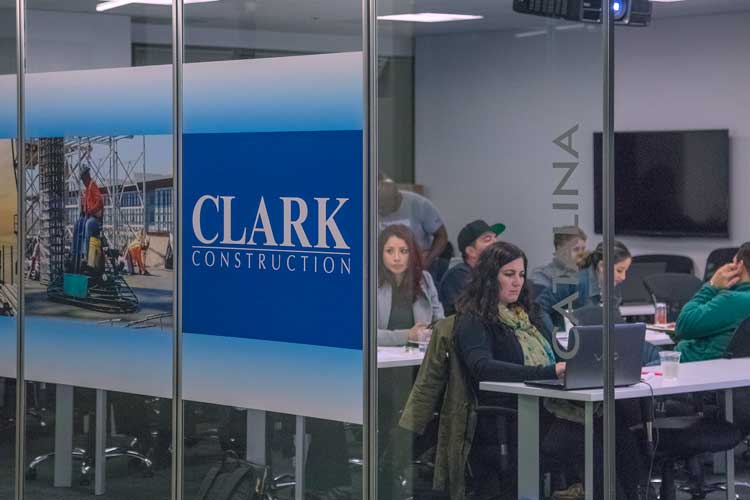Government has long had the stigma of moving slowly when it comes to innovation, and two government entities—Snohomish County in northwest Washington State, and the City of Westminster, Colorado—are both debunking that stereotype by taking a very different stance. Both entities have implemented an electronic plan review system, requiring any potential clients to use digital PDFs for applications, rather than paper-based forms. To do this, each government entity turned to Bluebeam Revu and Studio, which offer cloud-based project efficiency and collaboration solutions that set the standard for workflow efficiency for +1 million design and construction professionals worldwide.
The Approach
Snohomish County Executive Dave Somers implemented a Service, Technology and Excellence Program (STEP) in mid-2016. This program had four goals: 1) improve customer service; 2) implement continuous improvement for processes and systems; 3) provide technology solutions; and 4) expect system-wide excellence. In alignment with this vision, he empowered the Planning and Development Services (PDS) Director, Barb Mock, to lead a department-wide effort to improve the permitting process and eliminate paper submittals for permits and land use approvals. In September of 2018, for permitting projects, the department went 100% paperless.
“This is important because in the future local government will need to become more efficient by innovating, giving opportunities to empower employees, and raising the level of customer service. Over time, we have learned that, while well intentioned, our own government employees are not always aware of the business needs of our local contractors and developers. Therefore, we now always ask them,” explains Mock. “At PDS, we invite our customers to partner with us through our local master builders association, then we build a relationship with them and ask what they need to be successful. We try to put our customers in the driver’s seat of new innovation and seek their assistance to pilot new processes and test software. We consider any feedback, good or bad, a gift. For that reason, we encourage our customers to communicate with us even when things don’t work well,” she said.
Putting the clients first and emphasizing their experience was also the approach for Westminster, Colorado. Applications Specialist Genevieve Pizinger elaborates, “We really wanted something that was interactive.” Both situations called for a platform for access, and Snohomish worked with mybuildingpermit.com, while The City of Westminster used TRAKit. “We knew that whatever we chose, it had to be in conjunction with another software, which was Bluebeam,” declares Pizinger.
“We wanted to make plan submissions more accessible. If you want to find something about where your permit is, find your document, find the status, who has it, or who’s looking at it; we think this is a lot better way to go. Rather than going and being sent to a phone tree.”
– Snohomish Sr. Plans Examiner Mike Niemer
The Basic Overview:
- PDF was chosen as the standard file format for electronic plan submissions
- Clients use a web portal to ensure that they are submitting the correct applications to the correct jurisdiction
- The portals advise the client on the requirements of the PDF they need to submit to the county or city agency for approvals
- Once submitted, an integrated tracking system advises government reviewers about pending applications and yields a dashboard for submission locations
- Government reviewers then open the documents in Bluebeam Revu (for single reviewers) and Studio (for multiple reviewers)
- Revu allows for customized profiles and colors to improve the ease of document creation, markups and processing
- Studio shows the latest markups and the names of reviewers who have participated in the application processing
- Custom tool sets within Revu allow for stamps and approval symbols acceptable to government standards
- The client can access the portal and the documents to ensure compliance prior to construction
Training and Roll Out
The City of Westminster quickly saw some differences among internal departments upon rollout. “Within community development, we have our building division, our engineering division and our planning division, and we ripped the band-aid off for all three,” says Pizinger. Meetings were set up for external clients to explain how the new system would impact access and approvals, while internal stakeholders received computer and workstation upgrades as well as internal training packages specialized across the departments. “Now, every division uses it, and everything is now required to be submitted electronically,” notes Pizinger. The user-friendly approach for the system proved to be Westminster’s biggest ally in rolling out the new system. “A lot of people who have been here for a really long time were facing a change in the ways they were used to working. That can be hard for those who are kind of set in their ways. We have now totally changed that up and I think that the learning curve was the biggest challenge.”
Snohomish County also had similar differences among user prowess. “Upon implementation, we quickly realized that we had two different groups to train,” explains Mona El Soussey, Training Coordinator for Snohomish County. “One group was very comfortable with technology in general and wanted a faster paced training. The other group was completely the opposite and needed a slower pace, so we tailored the training to those two different groups.” An internal survey was created and distributed among the groups to find out exactly what their obstacles were to adoption, and this helped El Soussey to shape the most effective training program possible. A four-section manual was created internally to address the relevant features of Revu, such as custom tools, the Markups List, Stamps and OCR, and Overlay and Compare. “We have a wide mix of employees, and we needed to address everybody’s needs,” says Sr. Plans Examiner, Michael Niemer. “Whether you’ve been raised on computers, or you’ve been doing everything with pen, we needed to be able to train everybody and make sure everyone understood what the program can do. Then they move to that next step, where they could then apply this program to how they can do their job better.”
“I felt that Bluebeam was very intuitive, and user friendly, so it was easy for me although I don’t even come from the construction industry – I’m a trainer. I was able to learn a completely new system in a month, and be able to train on it. It was nice that the actual program is easy to learn.”
– Mona El Soussey, Training Coordinator, Snohomish County
The Impact
Both municipalities have seen a positive business impact by creating the portal system and using Bluebeam Revu and Studio for document review and approvals. “I guess we’d put it directly with the mindset of continuous improvement,” notes Niemer. “We’re very sensitive now to how many people we bring onboard after the downturn that happened in 2008. We learned that we can’t just throw people at a problem; we need a better solution.”
“We implemented the training program about a year ago. After staff took the first basic training module, according to training surveys, 70% of those who took our training stated they could do their electronic reviews. I think this speaks to the success of the training. We now have three modules of Bluebeam training. We have 101, 201 and now we are developing 301. And, they’re all different,” says El Soussey. “101 provides the basics of Revu in a classroom type training that lasts about two hours. This course is included in onboarding training. 201 consists of a workshop where participants followed a manual to complete hands-on exercises. The manual includes 40 hands-on exercises where each exercise has screenshots that clearly shows how to do the steps.”
Using Bluebeam to go paperless for document reviews and submissions has helped both municipalities to create a solution that benefits both the internal reviewers and the external clients who submit through the portal. “I can’t tell you how much paper that we’ve saved,” discloses Pzinger. “The applicants upload everything they can, so there’s not any reason for them to ever to even have to come in to the office. That has saved a huge amount of time.”
Snohomish County Sr. Plans Examiner, Michael Niemer, has seen the improvement on both sides of the permit applications. “Revu is actually producing cleaner reviews, and more concise reviews. We were hoping to give the customer back a better product. And internally, we had to address the culture shift that would arise from going from paper to electronic.” That same culture shift played a part in the success of Westminster’s electronic plan review system. “Getting everybody on board was a huge challenge. Especially when you have folks who have been doing things the same way for, literally, decades,” says Pzinger. “Since we have so many different divisions, and departments, and user groups, getting them all on board and trying to figure out a standard process for everybody to use meant finding a process that worked for both internal and external stakeholders.” Revu’s custom profiles allowed reviewers and submitters a quick, and visually identifiable way to determine relevance.
“We relied on Bluebeam Revu because it was customizable. When you have 16 separate entities making comments, it can be quite confusing, but Revu made the process and customer profiles customizable. We were able to process about 2000 more permits than we had the previous year without the electronic reviews,”
– Genevieve Pizinger, Applications Specialist, City of Westminster
Niemer echoes the system’s success on the Snohomish side. “We’ll get a house plan, will get three different basics based on that plan because they have three different elevations. Well, it’s the same house. I only must reveal what’s been modified, so that my markups pertain to all three. So right there is a time savings; you cut it by at least one third,” he explains. “For a townhome, I did 14 fire sprinkler permits in one or two hours, which otherwise would have been easily an entire day.”
With time savings for both governments and clearer communication with clients, the advantages of electronic plan reviews are easily apparent. In this “modernize or die” world, government is certainly following suit, thanks to the efforts of the City of Westminster and the Snohomish County in Washington State. Michael Niemer is happy to see the program become a reality. “As far as our projects, the biggest thing it’s influenced is our 100% paperless commitment. That would not be possible without an effective electronic review software. Bluebeam was really the key to being able to make the shift to 100% paperless. Every single application that we accept now is online, we don’t do any more paper submittals.”














